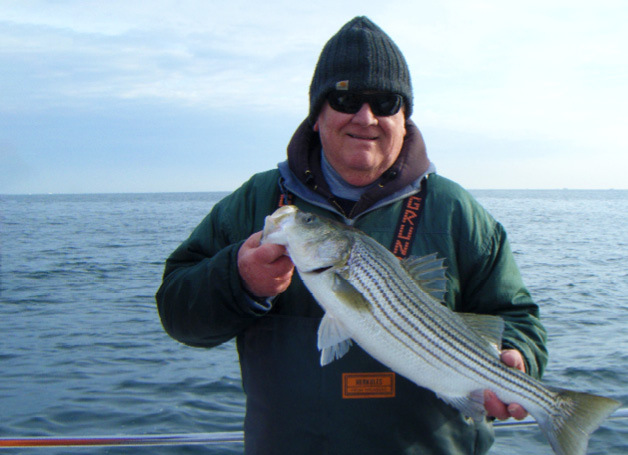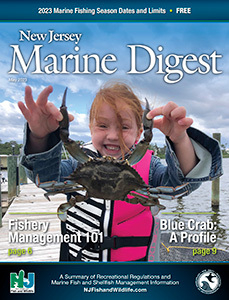Using Circle Hooks

When Fishing with Bait for Striped Bass
Regulations require using inline (non-offset) circle hooks when fishing for striped bass with bait. Bait is defined as any marine or aquatic organism live or dead, whole or parts thereof. This does not apply to artificial lures with bait attached. Striped bass caught using an unapproved method of take must be returned to the water immediately, without unnecessary injury. (See striped bass regulations, Finfish Regulations)
Using non-offset circle hooks significantly increases survival of released fish. In 2021, more striped bass were estimated to have died from catch and release than were harvested — 2.6 million fish and 1.82 million fish, respectively.
What is a Circle Hook?

A circle hook is defined as a
How Do Circle Hooks Increase Survival of Released Striped Bass?
Using circle hooks reduce occurrences of gut-hooking which can cause injuries to internal organs of the fish. If a striped bass swallows the bait, the circle hook is designed to slide out from its throat and catch on the corner of its jaw. When a fish is hooked in the corner of its jaw, this also leads to shorter de-hooking times and less overall stress on the fish.
Tips for Using Circle Hooks
When a fish takes your bait, do not sweep the rod upward to set the hook. The circle hook sets itself when the fish tries to swim away. Simply let the line come tight, then fight the fish.
Tackle Recommendations
- Use barbless hooks or bend barbs down.
- Use non-stainless steel hooks. If gut-hooked, leave the hook in the fish and cut the line as close to the hook as possible. The hook will rust away.
- Replace treble hooks on artificial lures with single hooks.
- Use appropriate tackle suited to the size of the fish; don’t fight the fish to exhaustion.
Fish Handling Best Practices
- Keep the fish in the water when de-hooking.
- If you must take the fish out of the water, use a rubber or soft-mesh landing net.
- Avoid handling fish with dry hands.
- Avoid dragging fish across dry sand or rocks.
- Hold fish horizontal with support.
- Avoid touching the fish’s gills or eyes.
- Return the fish to the water as soon as possible.
- When reviving fish, hold fish headfirst into the current so water flows through the mouth and over the gills.

